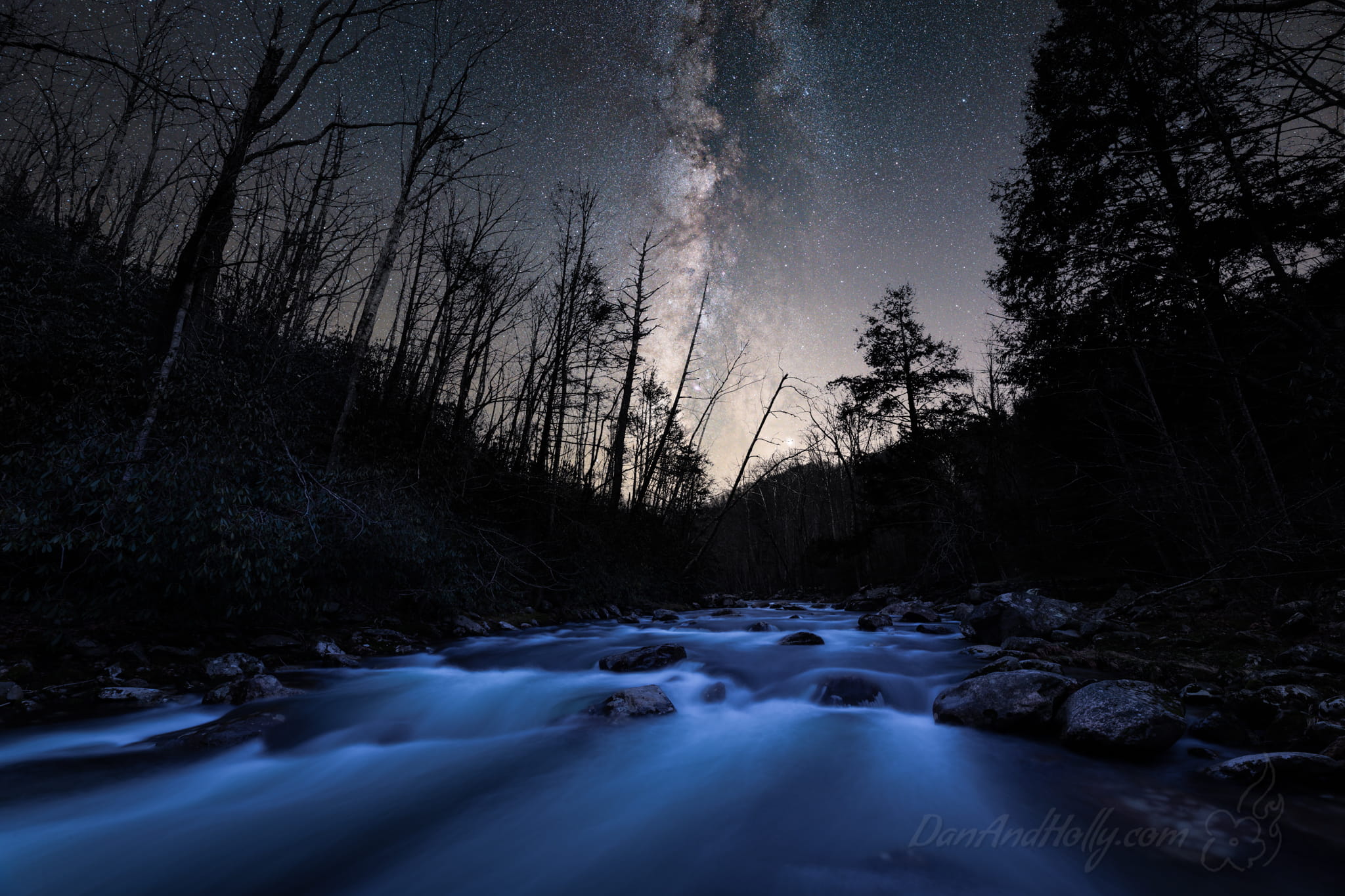

Last week I talked about the end of the Milky Way season, that sad time of year during the winter when the sun sits between us (the Earth) and the beautiful parts of the Milky Way – actually it’s all beautiful, maybe I should say the *most* beautiful parts of the Milky Way. The image last week was actually the second-to-last viewing of the Milky Way for 2019, and this week’s is the actual last viewing (for those interested, the Milky Way is actually always there, but it’s such a faint object in the night sky that the moon prevents you from seeing it, especially here in the east where our atmosphere is much more humid and our skies very light polluted. So by “viewings”, I simply mean the new moon part of the lunar cycle where there is no moon to detract from seeing the Milky Way). I spent so much of time last year photographing the streams in the Smoky Mountains that I thought it would be fun to combine my two passions, and do a Milky Way image with a stream.
Now, let’s talk about these images for just a second, because there can be a bit of controversy around them (at least in photography circles). When you take a picture of the Milky Way, you’re battling a number of things – allow me to explain. As I mentioned, the Milky Way is a faint object in the night sky, so in order to capture it, you have to have a really long exposure. The problem with really long exposures is that the earth is rotating, so eventually, the stars start to oval and blur, which is not what we want for this type of image (though sometimes you do, as with star trail images). To combat this, photographers will do one of two things; crank up the ISO on their cameras, which means inevitably you add a bunch of noise to the image (graininess) OR you track the sky. Tracking the sky (which is what I do now) involves putting your camera on a device that allows the camera to follow the sky as it moves, which allows for longer exposures (i.e. less noise / grain) BUT, while the sky looks fantastic this way, the ground is now what’s moving so IT gets blurry. One way or another, something is moving – so you as a photographer have to pick your battle: deal with the noise / graininess, or deal with the blurry foreground.
Now, all that said, no matter the method chosen, all the images you’ve seen of the Milky Way that are really vibrant (like the one above) have been processed in two halves. That means the photographer will effectively separate the sky from the foreground using Photoshop, or a tool like it, bring out the Milky Way in the sky, and then balance the foreground elements so everything looks natural. For tracked sky images, that means the photographer actually takes a picture of the foreground, removes the sky, and then lays it over top of the sky image (covering over the blurry foreground), for one complete image (we refer to these as composite images). If you didn’t do that, either the sky would look great and the foreground would look like it was the middle of the day, or the foreground would look nice and the Milky Way would be super faint and not that noticeable.
Here’s the controversy. Some people feel that shooting the sky and foreground separately, and combining them as a composite, is somehow “cheating” (as if there were rules to art). My thinking is this, if you’re going to separate the sky from the foreground in processing anyway, what difference does it make if you did it in one shot, or did it in a million shots. If our goal is the best possible image (which is my goal), then how I got there shouldn’t matter. What matters is that the image is attractive and the viewer is moved by it. Now, while I make no claims to being a photo-journalist, I am a realist with my photography, so I try to make my images as astronomically correct as possible – meaning if you had the eyes of a cat, and went to the Little River at just the right time, you could actually see the image above. This means I won’t personally swap in the Milky Way to just any ole scene, just for the heck of it and regardless of the direction the camera was pointing, and at least not tell you that’s what I’ve done. Not every photographer feels this way, as Instagram and sites like it are full of images that are completely from the imagination of the artist, and don’t represent any sort of reality (which is totally fine in my opinion if that’s what their art is).
So there you have it. These are the things the photographic community wring their hands over. 🙂 In the end, do you like the image? I do… and frankly that’s all I care about.
More next week (pretty images… not controversy)!
–Dan Thompson
